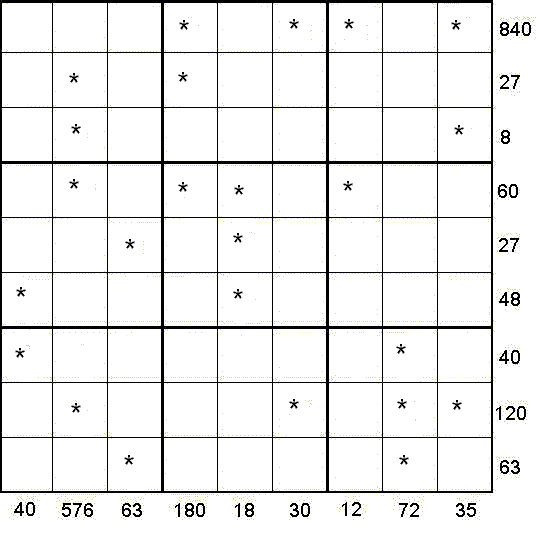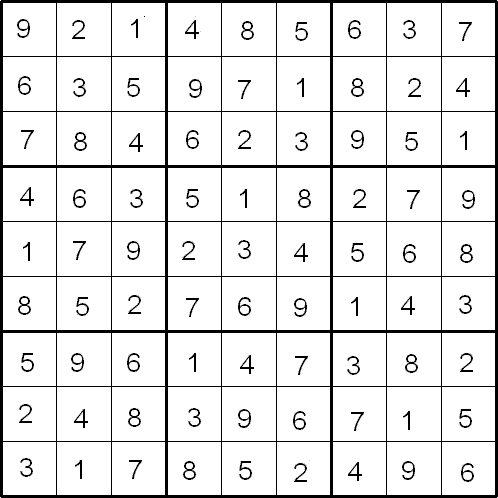Star product Sudoku
The puzzle can be solved by finding the values of the unknown digits (all indicated by asterisks) in the squares of the $9\times9$ grid.
Problem
By Henry Kwok
Image

Rules of Multiplication Equation Sudoku
Like the standard sudoku, this sudoku variant has two basic rules:
- Each column, each row and each box ($3\times3$ subgrid) must have the numbers $1$ through $9$.
- No column, row or box can have two squares with the same number.
The puzzle can be solved by finding the values of the unknown digits (all indicated by asterisks) in the squares of the $9\times9$ grid. At the bottom and right side of the $9\times9$ grid are numbers, each of which is the product of a column or row of unknown digits marked by asterisks. Altogether a set of 18 equations can be formed from the columns and rows of unknown digits and constants.
For example, in the first and second columns beginning from the left of the $9\times9$ grid, the following equations can be formed:
$ *\times* = 40$
and
$*\times*\times*\times* = 576$.
In the fourth and fifth rows beginning from the top of the $9\times9$ grid, the following equations can be formed:
$*\times*\times*\times* = 60$
and
$*\times* = 27$.
After solving all the equations, the puzzle is solved by the usual sudoku technique and strategy.
Getting Started
Caitlin kept a record of the order in which she filled the Sudoku.
She filled the cell marked 1 first, then the cell marked 2, then the cell marked 3...
You might like to retrace her route to fill in the cells in the same order, though this is just one possible route through the problem.
You can print her journey here.
Student Solutions
Image

